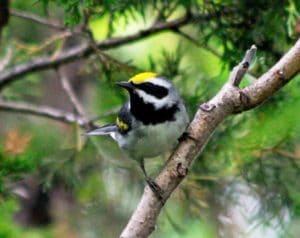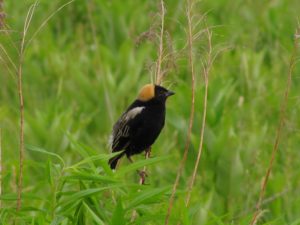Farmscapes for Birds
This article is the first in a two-part series. In the winter article I will highlight some real-life success stories of working with landowners in partnership with NRCS and Audubon Vermont.
Audubon Vermont is working with the Natural Resource Conservation Service (NRCS) on two exciting programs, called the Forest Bird Initiative (FBI) and Champlain Valley Bird Initiative (CVBI). Both programs engage landowners in managing their land to protect a number of priority bird species in the region. Through these programs, forest, shrubland, and grass landowners are given the tools they need to make decisions about land management that benefit both the land and nesting birds.
Breeding bird surveys have shown that the forests and early successional grasslands and shrublands of Vermont and Northern New England are a globally important resource for birds throughout the hemisphere. However, many relatively common birds in Vermont are still declining throughout their range. Rather than waiting for species such as the Canada Warbler, Eastern Towhee, or Bobolink to become vulnerable and end up on a threatened or endangered species list, it is important to take action to proactively conserve birds in the core of their range. The advantage to this approach is that low-cost management activities, education, and monitoring can help maintain or increase the populations of these birds.
Audubon Vermont’s programs provide technical assistance to individual forest and early successional habitat (grassland and shrubland) landowners at no charge. The key to both initiatives is providing landowners with the information they need to make positive conservation decisions and then working with them to make those decisions happen on the ground. Audubon works in partnership with NRCS and informs and helps landowners enroll in cost-sharing programs that maintain and enhance bird habitat on their land.

The Golden Winged Warbler is losing habitat, in part because of reforestation. Photo by John Hannan
Some of the management recommendations that Audubon VT biologists recommend to landowners are: altering hayland cutting schedules to accommodate nesting birds, maintaining and enhancing shrubland habitat, and creating small openings in forests that enhance the overall diversity and vertical structure of the forest. NRCS will share the costs of many of these practices through its Wildlife Habitat and Environmental Quality Incentive Programs.
This article is the first in a two-part series. Stay tuned to the winter issue for some real-life success stories of working with landowners in partnership with NRCS and Audubon Vermont.


